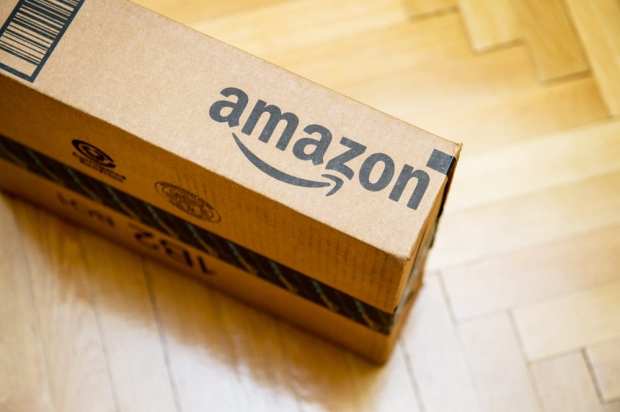A Game Of Margins — Making The Move To Fulfillment By Amazon

As sellers on the Amazon marketplace await possible fee changes for that platform — and consider if selling via rival marketplace might make sense — those sellers also have to determine if the eCommerce operator’s Fulfillment by Amazon service is worth it. That holds especially true for smaller merchants, which make up an increasing part of Amazon’s marketplace business.
Fulfillment by Amazon (FBA) is designed to make it appealing for third-party sellers to stick with the marketplace by handling picking, packing, shipping and customer service for them. Fees vary according to package size and storage time. Amazon really has no close competitors in the space: Even the marketplace operated by retail rival Walmart does not offer any such services.
FBA and Candles
New Orleans artist Stephanie Kauffman, who operates a customizable candle business called Mose Mary and Me, is engaged in a debate with herself about whether to employ FBA. She sells mainly via her website and the Amazon marketplace — along with brick-and-mortar stores — and within the last 30 days, she has fulfilled 124 orders via the Amazon marketplace, with an average ticket of $30, she recently told PYMNTS.
Using FBA, she said, would likely increase her sales further.
Data centered on seller experiences with Fulfillment by Amazon show that many sellers who use the service enjoy larger profit margins than those who don’t use it. Not only that, but a recent Feedvisor survey report on Amazon marketplace sellers found a profitable sweet spot when it comes to FBA. Amazon marketplace sellers who use FBA to fulfill between 60 percent and 100 percent of orders have a profit margin of 30 percent. “Nearly one-third of sellers who sold at least 60 percent of their inventory via FBA saw a 21 percent to 30 percent profit margin, compared to 25 percent of sellers who sold more product on their own” but handled their own fulfillment, the report said.
Kauffman, who handled her own fulfillment, offers free shipping — pretty much table stakes for so many merchants selling online — and she figures that having her products on Amazon displayed with a Prime logo (as with qualified FBA listings in the marketplace) would lead to more sales.
“But is it worth the squeeze?” she asked during the PYMNTS interview.
Her worry is about her candles being broken in shipment. Amazon is certainly known for its high level of customer service, but for Kauffman, the idea of her products being fulfilled from a large Amazon distribution center gives her pause, given what she views as a chance for breakage. That said, there is a savings potential were she to work with FBA. “It costs so much to ship because of the weight of my products,” she said.
Revised Fees?
Kauffman’s consideration of a switch to FBA comes as she and other Amazon marketplace sellers await more news of possible changes to the fees the company charges to its third-party sellers. Earlier this year, Amazon CFO Brian Olsavsky said the company might consider changing the fee structure it charges sellers as the breakdown of its sales continues to change. During the holiday quarter, Amazon reported that over 50 percent of sales on its platform came from small and medium-size businesses.
“More than half of our units sold are from third-party sellers, so it’s very important to us that we have the right business profile both for Amazon and for the sellers,” he said. “Part of that involves changing fee structures, sometimes adding new fees or subtracting old ones, part of it involves raising or lowering fees that sellers pay. So you’re going to see this continually from us,” Olsavsky, without offering further specifics.
As was the case with a handful other Amazon marketplace sellers contacted by PYMNTS — most of them smaller operations, like Kaufmann’s, and most of them operating from the New Orleans area — news of that possible change had yet to trickle down to those merchants. It should come as no surprise that all of them favored marketplace fee decreases, though none of them said they planned to leave the Amazon marketplace if that does not happen.
More Choices
That said, more marketplace choices are emerging.
News broke on Monday (Feb. 25) that Target wants to work with additional third-party sellers, and is inviting specialty and national brands alike to offer items online. By comparison, the hurdles to become a third-party seller are lower on Amazon and Walmart; on those sites, sellers ask for approval through an application. Target, by contrast, has been in the process of collaborating with Casio, Kaplan and Mizuno on an invitation-only approach to adding sellers to its website, according to the report. And the retailer is reportedly seeking additional products in spaces such as musical instruments, outdoor gear, electronics and home goods.
In fact, 36 percent of respondents in that Feedvisor report expressed a willingness to “expand” their marketplace activities to the platform operated by Walmart, with 27 percent saying the same about eBay. With its efficient distribution network and vast brick-and-mortar geographical footprint, Walmart has made exceptional strides since 2017.
Meanwhile, Kauffman and other sellers on Amazon await more news of revised fees, and keep trying to learn more about the ins and outs of the marketplace in an effort to fatten their margins.
